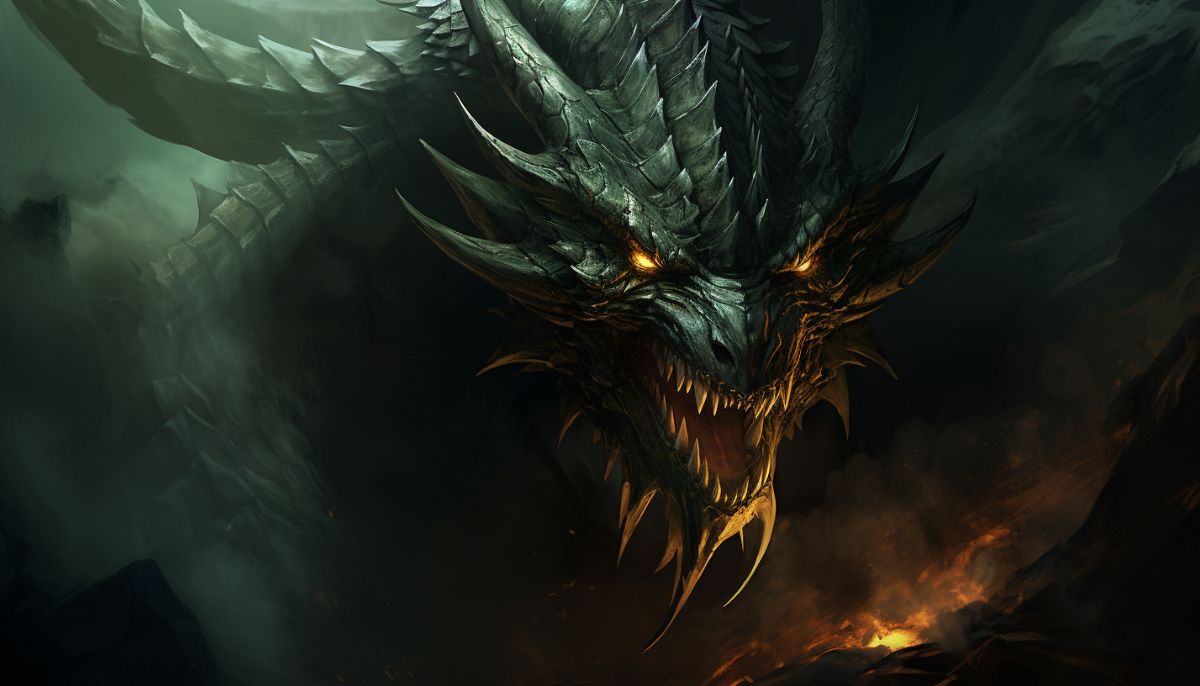In the heart of Greek mythology lies the tale of the Ismenian Dragon, a colossal serpent that once guarded the sacred spring of Ares near the ancient city of Thebes.
This formidable creature played a pivotal role in the founding of Thebes by the legendary hero Kadmos, and its story is interwoven with themes of heroism, divine intervention, and the supernatural.
Appearance of the Ismenian Dragon
Described as a massive serpent with venomous fangs and a crest of gleaming gold, the Ismenian Dragon struck terror into the hearts of those who dared to approach the spring of Ares.
Its multi-headed form and immense size made it a truly awe-inspiring sight, a testament to the fearsome power of ancient creatures in Greek mythology.
Sources about the Ismenian Dragon
The Ismenian Dragon, a prominent figure in Greek mythology, finds its presence documented in various ancient sources. Key literary works, including those attributed to Hesiod and Homer, provide invaluable insights into this legendary serpent’s significance in ancient Greece’s cultural and mythological tapestry.
Hesiod, one of the earliest known Greek poets, alludes to the Ismenian Dragon in his works. His writings, rich in cosmological and mythological themes, offer glimpses into the ancient beliefs surrounding this formidable creature.
Likewise, Homer’s epic poems, the Iliad and the Odyssey, although not the central focus, indirectly shed light on the dragon’s place in the broader pantheon of Greek mythology.
Other classical writers and historians, such as Pausanias and Apollodorus, delve deeper into the myth of Kadmos and his encounter with the Ismenian Dragon.
Through their accounts, we gain a more detailed understanding of the narrative, including the dragon’s role as the guardian of Ares’ sacred spring and its ultimate defeat by Kadmos.
The Ismenian Dragon’s presence in these diverse sources underscores its enduring significance in the ancient Greek imagination and its enduring legacy in myth and storytelling.
Kadmos and the Ismenian Dragon: A Battle of Legends
The most renowned account of the Ismenian Dragon comes from the tale of Kadmos. Fueled by divine guidance and determination, Kadmos confronted the serpent, engaging in a life-and-death struggle that would forever change the course of Theban’s history.
Kadmos emerged victorious through cunning tactics and unwavering resolve, but not without consequences. His encounter with the dragon would lead to divine and tragic transformations, illustrating the intricate web of fate woven by the gods.
Similar Greek Monsters and Tropes
The Ismenian Dragon finds kinship with other monstrous creatures in Greek mythology, such as the Hydra and the Chimera, embodying the recurring theme of heroes confronting formidable adversaries.
These narratives depict the human struggle against adversity and the indomitable spirit required to triumph over seemingly insurmountable odds.
The legend of the Ismenian Dragon is a testament to the enduring power of myth and the human spirit. Its legacy continues to inspire and captivate, reminding us that courage and resolve can lead to triumph and the establishment of enduring legacies even in the face of the most formidable challenges.
Want to know more about the creatures and monsters of Greek Mythology?

Explore more articles like this in our broader series on Greek monsters. To delve even deeper into the world of mythical creatures, be sure to check out our comprehensive hub article on the monsters of Greek mythology.






